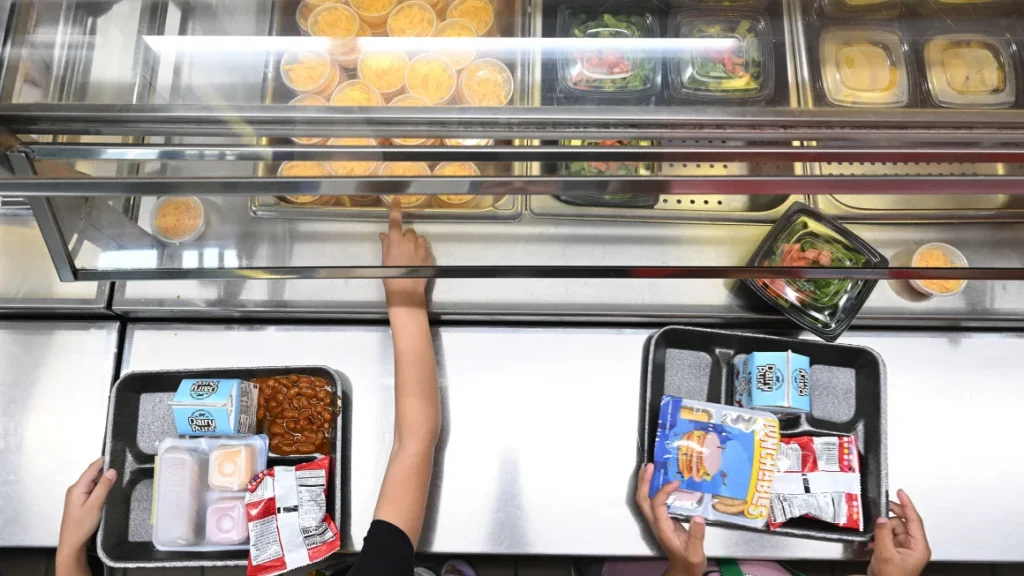
INDIANA—The US Department of Agriculture’s Food and Nutrition Service announced Wednesday that new US school meal standards will limit the amount of added sugars for the first time and slightly reduce sodium content, among other adjustments.

The final rule will be implemented in phases over the next few years.
K-12 schools serve breakfasts and lunches to nearly 30 million children every school day. According to the USDA, these meals are the primary source of nutrition for more than half of these children.
While school meals are paid for by local and federal funding, the USDA sets the standards for what is served in accordance with the US Dietary Guidelines. The changes are the first large-scale reform of school meal standards since President Barack Obama signed the 2010 Healthy, Hunger-Free Kids Act into law. The Joe Biden administration has also set forth a national strategy to end hunger and reduce diet-related disease by 2030.
Studies show that the content of school lunches affects schoolchildren’s health and nutrition. According to one study, the changes that took effect under the Obama administration to promote more fruits, vegetables, whole grains, and low-fat dairy products significantly decreased kids’ and teens’ body mass index.

The final rule is similar to the proposal outlined about a year ago. It considers feedback from more than 136,000 public comments and more than 50 listening sessions with state agencies, school districts, advocacy organizations, food manufacturers, and more stakeholders.
Current dietary guidelines recommend limiting added sugars to less than 10% of daily calorie intake. Still, data from the 2014-15 school year found that the average school lunch had 11% added sugars, and breakfast had 17% added sugars. Beginning in the 2025-26 school year, certain products — including breakfast cereals, yogurt, and flavored milk — will have specific limits on added sugars. By the 2027-28 school year, weekly meal calories will be capped at 10% added sugars.

While the USDA’s initial proposal suggested a gradual reduction in sodium, with three 10% cuts phased in over multiple years, the final rule requires one 15% cut in sodium in lunches and one 10% cut in sodium in breakfasts by the 2027-28 school year. Given the sodium levels in the broader food supply, this adjustment considers the “time needed for product reformulation and for student palates to adjust,” according to the USDA rule.
The USDA said in a news release that school meals will continue to emphasize fruits and vegetables, whole grains, and cultural and religious food preferences for balanced meals that kids want to eat. Beginning next school year, schools will also have the option to require unprocessed agricultural products to be locally grown, raised, or caught.
Information: CNN







.png)











